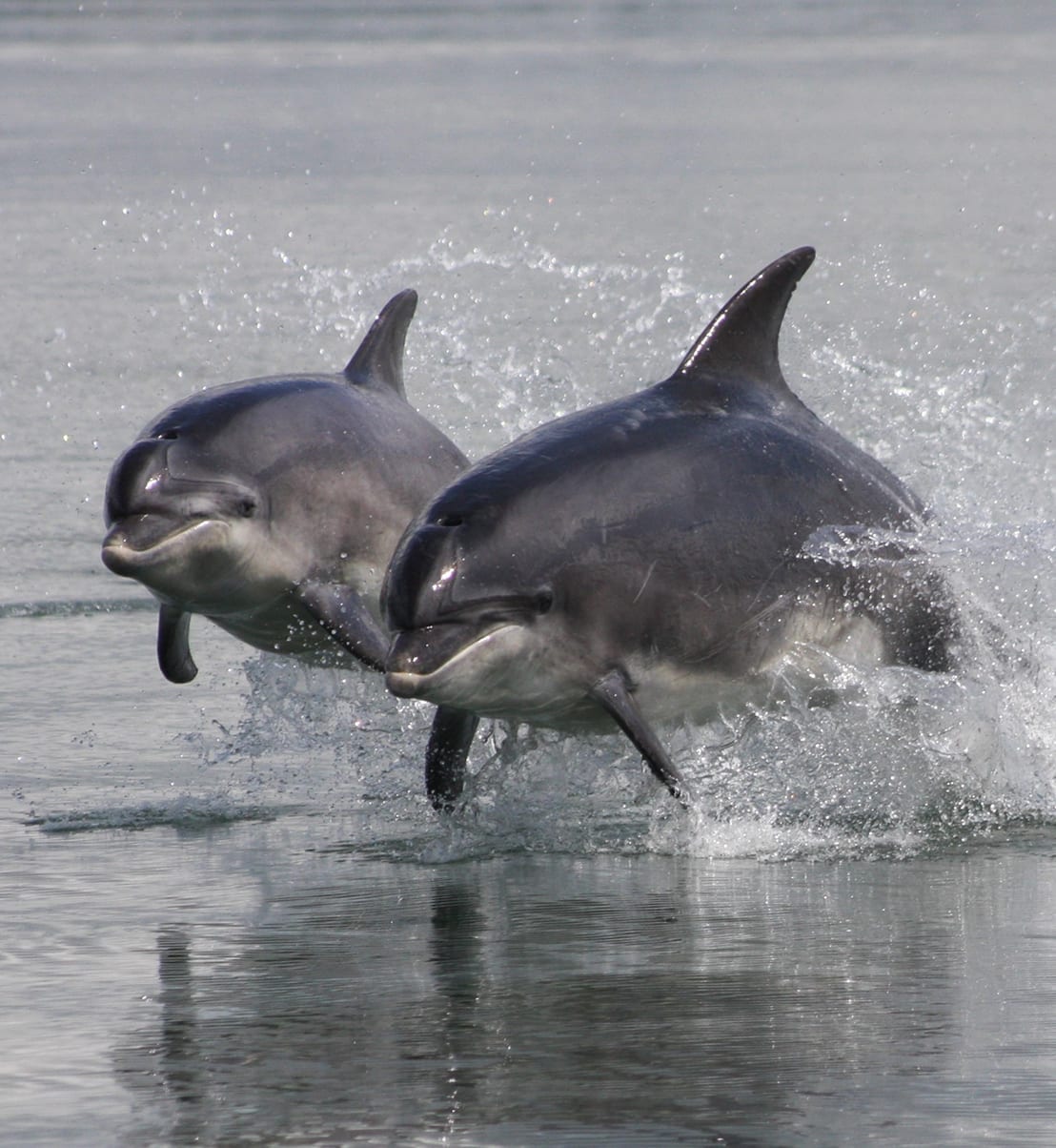CONSERVATION
Cetaceans have been
exploited for centuries
through whaling practices
for food, oil and baleen.
![]()
While whaling is still ongoing in certain countries, carried out under commercial, aboriginal and ‘scientific’ permits, it is by no way the main cetacean conservation issue. Cetaceans throughout the world face a wide variety of threats in a rapidly changing world, such as fisheries bycatch and entanglement, overfishing, pollution (noise, chemical and marine debris) and habitat destruction. There are 86 recognised species of cetaceans, 25 of which are found in Irish waters.
Many species worldwide are vulnerable or endangered, several are in danger of extinction and many more are so data deficient that an assessment as to their status cannot be made. Conservation of any species is largely dependent on continuous monitoring.
This enables identification of trends, distribution patterns, important areas for different species. Irish Whale and Dolphin Group have run a sighting and stranding scheme since 1991, maintain a photo-ID catalogue and regularly carry out research in a variety of topics.
Marine Conservation Zones
Marine Protected Areas (MPAs) or Marine Conservation Zones (MCZs) can help to improve the marine environment thereby helping to protect cetacean species. The designation and management of MCZs are currently high on the social and politically agenda. The Irish Whale and Dolphin Group have been actively involed in the management of the Shannon Estuary MPA since it was designated in 2000 and are working on a number of MCZ projects with some in collaboration with other IEN members.
Please click below to find out more about our MCZ campaign and proposals.
Irish Whale and
Dolphin Sanctuary
On 7th June 1991 the Irish government declared all Irish waters within the Irish EEZ to be a whale and dolphin sanctuary, in recognition of its importance as a habitat for whales and dolphins.
This followed a proposal from the newly formed IWDG. Initially the sanctuary was treated with scepticism both in Ireland and abroad but slowly the message that Ireland was important and conservation actions need to be developed took hold. Now the Irish Whale and Dolphin Sanctuary is embedded in the national psyche and the IWDG strive to make it a reality.
All Irish waters
within the Irish EEZ
to be a whale and dolphin
sanctuary, in recognition
of its importance.
Irish Government Sanctuary Declaration, 7th June 1991

Legislation
Irish cetaceans are protected under national legislation and under a number of international directives and agreements which Ireland is signatory to.
All cetaceans are protected under the Wildlife Act (1976) and amendments (2000, 2005, 2010 and 2012). Under the act and its amendments it is an offence to hunt, injure or wilfully interfere with, disturb or destroy the resting or breeding place of a protected species (except under license or permit).
Special Areas of
Conservation
In Ireland, the 1992 EC Habitats Directive as transposed by the EC (Natural Habitats) Regulations requires that cetaceans occurring in Ireland are maintained at favourable conservation status. Under Article 12 of the Directive, all cetaceans should receive strict protection within the Exclusive Economic Zone (EEZ).
Planning
IWDG contribute to good planning and promote conservation actions through the planning process. IWDG review large planning applications, both inshore and offshore, to assess potential impacts on whales and dolphins.
We identify species that may be affected and submit our opinion on whether an impact is likely and propose mitigation.
A recent independent review carried out in 2015, showed IWDG influenced the project outcome on over 95% of applications.
Conservation
Resource Downloadables
These downloads are for members only. If you have a membership, please log in.
If not, you can Purchase a membership here.

